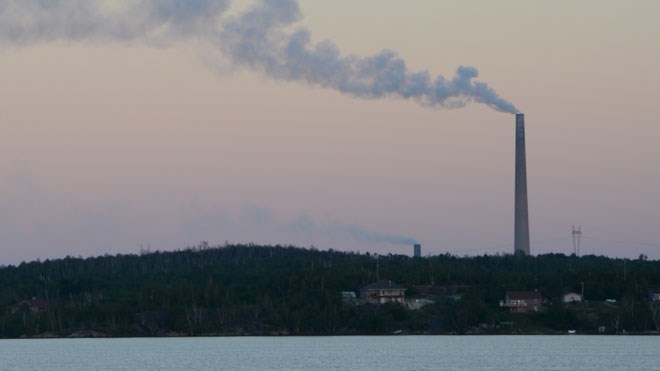Ten years ago today, Canadians became much more familiar with a Brazilian mining company called Vale.
On Oct. 6, 2006, Vale purchased homegrown miner Inco in a $19.4-billion bid.
The New York Times said at the time the sale “further undermines Canada’s status as a force in the mining industry.”
But with the benefit of hindsight, others have said Vale's purchase of Inco had to happen.
Jean-Charles Cachon, chair of Laurentian University's department of management, has argued both Inco and Falconbridge did not have the financial clout needed to expand their operations and meet growing global demand for nickel and copper.
In 2006, said Cachon, both companies forecasted demand for nickel and copper would increase by about 50 per cent over the next seven years, due to growing demand in emerging markets like China and India.
“In order to achieve that increase in production, the two companies combined needed to invest several billion dollars,” Cachon said.
At the time, Vale was around eight or nine times the size of Inco, Cachon said.
Even a merger between Inco and Falconbridge would not have created a company large enough to make those investments, he argued.
To complicate matters, Inco had a number of potential suitors at the time, including Canadian mining giant Teck Cominco, and, of course, Vale.
In a recent interview with BNN, Scott Hand, Inco's chairman and CEO in 2006, said Dalton McGuinty's provincial government had no interest in blocking a foreign takeover of Inco, which he contrasted to the Saskatchewan government's successful efforts to block the takeover of PotashCorp in 2010.
“My job at the time was get the best deal for our shareholders,” Hand said in the interview.
He added those shareholders did “very well."
Whether Greater Sudbury has done very well since 2006 is a matter up for debate, and often at the mercy of outside forces, such as the price of base metals like copper and nickel.
With current low nickel and copper prices, the city's unemployment rate has been higher than the Canadian average.
In August 2016, the city's unemployment rate was 7.8 per cent, while the Canadian average was seven per cent.
But Angie Robson, Vale's manager of corporate and Aboriginal affairs in Sudbury, said that since its purchase of Inco, the Brazilian miner has continued to invest in its Sudbury operations, and the city itself, through the good times and the bad.
Robson said Vale has invested $4.3 billion on capital projects in Greater Sudbury over the last decade.
“It's an unprecedented level of capital investment,” she said.
Those capital investments include the $1-billion Clean AER project, which is expected to reduce the Copper Cliff Smelter's sulphur dioxide emissions by 85 per cent.
Vale also invested $760 million to open Totten Mine in 2014 – after a three-year delay – and $200 million into its Challenging Ore Recovery Project, which broke ground in 2011.
Robson said Vale has also invested more than $25 million on community projects over that same period, including investments into Maison Vale Hospice, NORCAT, the Sudbury Food Bank and the Vale Living with Lakes Centre at Laurentian University.
Vale's critics have said big decisions happen in Brazil, and far removed from more local leadership in Sudbury and Toronto.
Laurentian's Cachon said the year-long 2009-2010 labour dispute with the United Steelworkers in Sudbury undid efforts Inco had made in the 1980s to improve its relationship with the union.
In 2009, Vale wanted new employees to be switched to a defined contribution plan, which would save it millions in benefits.
The company eventually got its way, after a long and combative strike, and the next round of labour negotiations, in 2015, went much smoother.
“The negotiations process has been productive and respectful, and we are encouraged that we have been able to reach an early tentative agreement that is unanimously recommended by both bargaining committees for our members to consider,” said Rick Bertrand, president of United Steelworkers Local 6500, after reaching a tentative agreement without resorting to a strike in 2015.
“We endorse this deal and look forward to presenting the details to our membership as it paves the road for the next five years.”
Randy Ouimet, general manager of Normet Canada Ltd., which supplies mining equipment to Vale, said the Brazilian miner has made more efforts recently to prioritize local suppliers.
“That has transitioned more back to a Canadian procurement scenario,” he said.
Vale's Robson said 80 per cent of the company's spending on supplies and services in Greater Sudbury stays local.
She added Vale has retained much of the local leadership that led Sudbury's operations during the Inco years and the important decisions regarding base metals operations are made in Canada.
But Vic Pakalnis, president and CEO of Sudbury's Mining Innovation Rehabilitation and Applied Research Corporation (MIRARCO), said Sudbury would be better positioned as a leading hub for mining research if Inco and Falconbridge had been able to merge in 2006.
“They would have been a greater company if they had been allowed to merge,” he said.
Pakalnis said there is less research concentrated in Greater Sudbury today, than there was during the 1980s, because the most senior leadership is no longer based in Canada.
Pakalnis said the mining landscape could be very different in the near future, and added Sudbury's best days are still ahead.
